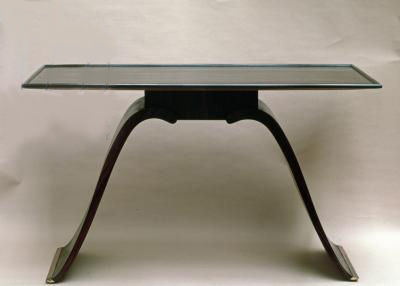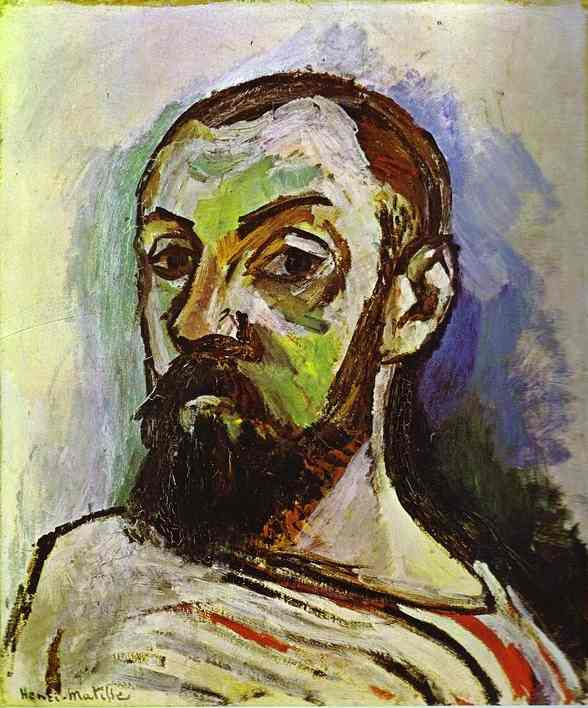
The Arts
Styles of Art

Woman I. William DeKooning, Abstract Expressionism has an interest in the physical reality of paint on canvas rather than on any narrative content.

Table, Emile Jacque Ruhlman Art Deco was mainly used for textiles and furniture. Sleek elegance, clean lines and symmetry are all characteristics of this unique style.

I Saw The Figure Five In Gold, Charles Demuth. An art style with definite rhythm where colours and shapes interplay. Abstract Formalism is concerned with the formal aspect of painting.

Isolde, Aubrey Beardsley Art Nouveau means "new art" and was characterized by its devotion to curved lines (also known as whiplash lines) and spread into different art forms and textiles.

Armchair, Marcel Breuer The Bauhaus was a famous German school for design where the philosophy of art was that art should meet the needs of society and that there wasn't a distinction between practicality and fine art.

ADAM, Barnett Newman A style of art this highly expressionistic, using the intensity of colour to portray emotions. The colour field style makes use of different intensities of colour and shapes to intensify the appearance.

Column, Gabo Constructivism was taken from miscellaneous industrial materials like metal wire and plastic where modern materials and crisp designs reinforced emerging functionalism.

The Man With A Pipe, Georges Braque The function of cubism is to represent and present at the same time. Often using overlapping layers and fragmented pictures, cubism is reduced onto the canvas so that no attention is taken from the design.

Leaves and Navels, Jean Arp A meaningless name given to protest anti-art movements, this style of art was a reaction to the snobbery and traditionalism of the art establishment and the evils of society.

Composition 1935 Peit Mondrian De Stijl tried to produce an organized response to the chaos of WW1. This style was simplified compositions and a restricted palette of colour, devoid of green. There is no depth, shading or perspective, creating a geometric tighter viewing plain.

Spiral Jetty, Robert Smithson Earth art uses the land itself for materials. The artwork is often created in remote areas and would often allow for artistic freedom, where some works stretched over many miles.

Self Portrait, Henri Matisse Les Fauves meaning "wild beasts' was the first explosive art movement of the 20th century. It revolutionized the use of colour using bright, pure and complementary colours in vigorous strokes.

Suburban Train, Severini Often centered around the ideas of noise, machines, pollution and cities, artists embraced the new industrial world, welcoming technology instead of fearing it.

The Folies Berger, Edouard Manet. Impressionists were interested in showing atmospheric effect through light and colour rather than the subject matter. Mainly interested in light, they often painted in the open air and natural settings. Small brush strokes with contrasting colours side by side would blend the colours for the viewer together from a distance.

Red Petals, Alexander Calder Minimal sculpture is made from industrial materials like plastic or concrete. They are not intended to be representative or emotional and are to be seen just as they are.

Adam and Eve, Karl Horst Hodicke This form of painting uses aggressive colours and shapes.

Zebras, Victor Vasarely A type of abstract art that uses the optical effects of pattern. Patterns appear to vibrate and change their shape as the viewer watches them.

Airstream Trailer, Ralph Goings This style represents the picture unaltered and a banal subject matter. Painted as to create a hyper realism.

Campbell's Soup Can, Andy Warhol Images of Pop Art (derived from the term Popular) were taken from mass culture. Many artists duplicated objects ranging from comic strips to soup cans.

La Grande Jatte, Georges Seurat Post Impressionism came from applying the two previous decades of art before it and was heavily influenced by painters like Cezanne and Van Gogh.

The Gleaners, Jean Francois Millet A style used to represent figures and objects exactly as they appear in life, often using 'ugly' models to represent reality.

City Activities, Thomas Hart Benton Regionalism focused on traditional American values in art and tried to capture scenes of rural life.

The Passion of Sacco and Vanzetti, Ben Shahn Similar to Regionalism but using a social or political subject to convince the viewer of the evils of poverty, immorality and war.

As One, Daphne Odjig This imagery simplifies the subject, flattens plains and uses minimal details.

The Spinning Top, Hans Bellmer Typical images in Surrealism range from dreamlike scenes to nightmarish phobias. Artists wanted to express the unconscious, often painting illogical scenes.

On The Horizon- Angel of Certainties, Redon Subject matter was to be suggested instead of understood, where artists were inspired by vivid imagery of symbolic nature and emotion dream like visions